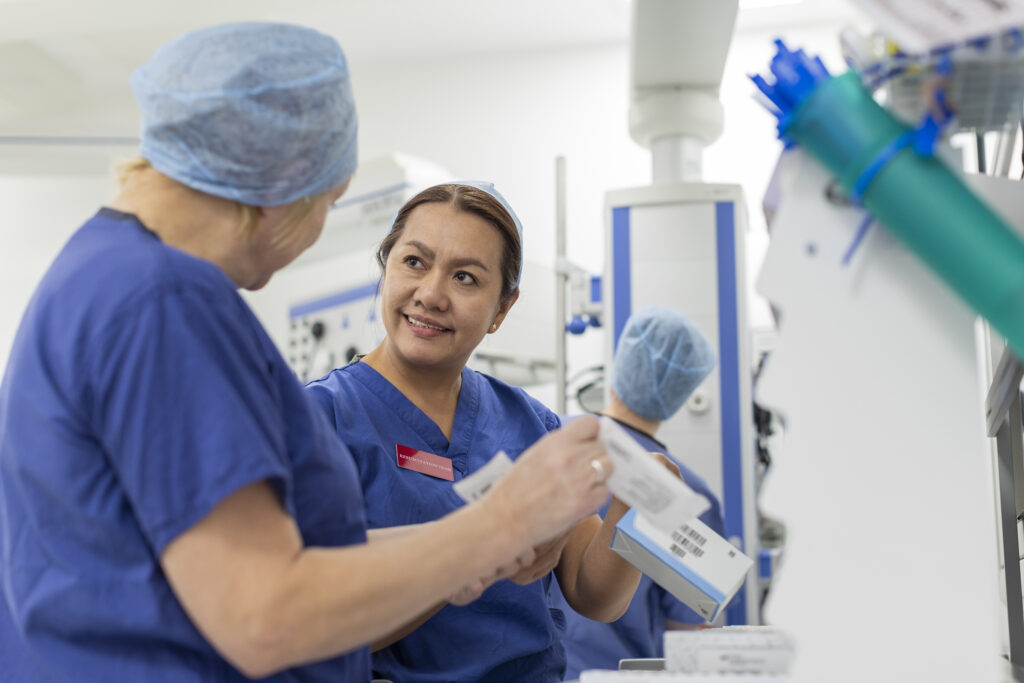What is toenail removal surgery?
Toenail removal surgery, also known as nail avulsion, is a minor surgical procedure to treat various nail conditions by removing part or all of a toenail. This is done to relieve pain, treat infections or manage thickened or deformed nails that don’t respond to conservative treatments. There are two types of procedures: partial nail avulsion, where only the affected part of the nail is removed, and total nail avulsion, where the entire nail is removed.
These procedures are used for conditions such as ingrown toenails, fungal infections and recurrent nail trauma. In some cases, the nail matrix (the part of the nail that produces new nail cells) may be treated with a chemical like phenol to prevent regrowth and recurrence of the problem.
Benefits and risks
Toenail removal gives long-term relief from chronic nail problems and can improve foot comfort and function. However, like any surgical procedure, it carries some risks, including infection, delayed healing, and, in rare cases, adverse reactions to the chemicals used during the procedure.
When is nail removal recommended?
Toenail removal is recommended when conservative treatments, such as antifungal medications and topical creams, have failed. It’s also suitable for severe or recurrent onychocryptosis (ingrown toenails) and nails that are thickened or damaged.
Please call to enquire about the price
Ways to payBefore surgery
Preparation for surgery
Preparation for nail removal surgery involves several important steps to ensure a smooth and successful procedure. Before the surgery, your podiatrist will do a thorough assessment of your medical history and current health status. This includes discussing any medications you are taking and any allergies or previous reactions to anaesthesia. You must inform your healthcare provider about any existing health conditions, such as diabetes or circulatory issues, which may affect the healing process.
In the days leading up to the surgery, you may be advised to stop taking certain medications that may increase bleeding risk, such as blood thinners or anti-inflammatory drugs. Your doctor may provide you with specific instructions on fasting or dietary restrictions before the procedure. On the day of the surgery, wear comfortable clothing and bring a pair of flip-flops or sliders for after the procedure. It’s recommended to arrange for someone to drive you home after the procedure, as the local anaesthesia and the dressing on the toe may affect your ability to drive safely.
Also, prepare your home environment for post-surgery recovery. This may include setting up a comfortable resting area with pillows to elevate your foot, having easy access to dressings and pain medications and arranging for assistance with daily tasks if needed.
By following these preparation guidelines, you can help ensure a successful nail removal surgery and a smoother recovery.
During surgery
The surgical procedure for nail removal is performed by a podiatrist under local anaesthesia. This means you won’t feel any pain during the operation. To minimise bleeding, a tight rubber band is often used as a tourniquet around the toe. This helps to control the blood flow and keep the surgical field clear.
In some cases, the podiatrist may choose to do a partial nail removal where only a portion of the nail is removed. This is a less invasive procedure and is often chosen based on the severity of the condition. For more severe cases, a total nail removal may be necessary to fully address the issue.
During the procedure, the podiatrist may also focus on the nail matrix, the tissue from which the nail grows. Removing the nail matrix either surgically or chemically can prevent regrowth and alleviate recurring nail problems.
After surgery
Immediate post-surgery care
After toenail surgery, it’s important to follow specific post-operative care instructions to ensure proper healing and recovery. The first step is to keep the surgical area clean and protected. A bulky dressing will be applied immediately after the procedure to protect the site and manage any bleeding. You will also need to change and reapply the dressing regularly to keep the area clean and promote healing.
The dressing applied after the procedure needs to be left in place for 24 hours. After this time, a small dressing can be applied, but this will need to be changed twice a day, following bathing the toe. This information will be discussed before the procedure. After 24 hours, you can transition back to a soft trainer-type shoe and resume walking. Return to sporting activities will need to be discussed with the podiatrist. When driving, make sure the numbness in your toes has worn off and wear normal closed-in shoes for safety. As you get back to normal activities, make sure to wear shoes that support your recovery and avoid strenuous activities. Your surgeon may also recommend using saltwater to gently clean the area, reduce the risk of infection, ease discomfort, and promote healing.
Follow these guidelines to ensure a successful recovery and minimise complications.
Long-term recovery
Long-term recovery after toenail surgery is key to achieving the best results. During that time, patients are generally able to go back to normal activities. However, it’s recommended to avoid certain sports and activities that may irritate the surgical site until it’s fully healed. Healing can take between two and six weeks.
For those with manual jobs which involve more physical demands and exposure to dirt or pressure, a longer recovery period may be needed compared to those with sedentary jobs.
Appointment and Treatment Plan
Initial Consultation
You’ll start by meeting with a podiatrist or general practitioner to discuss your toenail issue, including pain, thickening, infection or recurring ingrown nails. After examining the affected toe and reviewing your symptoms and medical history, the clinician will determine if partial or total toenail removal is the best treatment.
Treatment Planning
If nail removal is recommended, your doctor will explain the procedure, the difference between partial and total nail avulsion and whether permanent removal is necessary. You’ll be informed of the benefits, risks (infection or delayed healing), and what to expect during recovery.
Pre-Operative Preparation
Toenail removal is a minor procedure, so extensive testing is rarely required. However, your doctor may ask about allergies (especially to local anaesthetics or antiseptics), medications, and medical conditions such as diabetes or poor circulation that may affect healing.
Surgery Day
The procedure is performed under local anaesthesia. Once the toe is numb, the doctor will remove either part of the nail (partial avulsion) or the entire nail (total avulsion). In some cases, a chemical like phenol is applied to the nail matrix to prevent regrowth. The procedure takes 20-30 minutes, and you’ll go home the same day with a bandaged toe.
Recovery
You’ll be advised to keep the toe elevated, clean and dry for the first 24-48 hours. Mild pain, oozing or swelling is normal and can be managed with over-the-counter pain relief. Dressing changes and saltwater soaks may be recommended. Most people can walk normally within a few days, but strenuous activity or tight footwear should be avoided for 1-2 weeks. Full healing may take 2-6 weeks, depending on whether the nail was partially or completely removed.
Experts
We are proud to provide patients with access to a wide range of clinicians, chosen specifically for their knowledge and reputation in their area of expertise. Our experts align with our values: putting you at the centre of your care and educating you on your options at each step of the journey. We encourage you to learn more about our clinicians and how they can help you below. As always, please contact our patient services team if you require any additional information.
We offer 3 ways to pay for your treatment
We exist to take the stress out of private healthcare.
Our payment options are designed to offer you easy access to our treatments and services. You can choose to pay on the day, spread the cost, or use your private medical insurance.
Our patient services team will guide you through the process, providing clear costs and support throughout your course of treatment so you can focus on the thing that matters most – your health.
Whether you pay in advance, spread the cost, or use your private medical insurance, rest assured you will be receiving exceptional care 365 days a year.
Pay in Advance
Even if you do not have medical insurance, you can still get quick and comprehensive access to private medical care.
We provide transparent pricing from your initial consultation to the completion of your treatment so you know where your stand, every step of the way.
We accept all major debit and credit cards, as well as Apple Pay for UK residents. Please note that we do not accept cash or cheques.
Pay monthly
Paying for your treatment at OSD Healthcare doesn’t need to mean settling the full cost in one go.
Many of our treatments have a pay monthly option that allows you to spread the cost of your treatment over 12 months with no credit checks required.
A minimum spend of £300 does apply. We’ll take your first payment upfront and then arrange a direct debit for your monthly payments thereafter. It’s that simple.
Pay using PMI
We are recognised by all major health insurance companies and with our extensive range of services, there are lots of benefits to using your insurance with us. Our patient services team is here to answer any questions you may have about using your private health insurance with us.
Please bring along your policy details including your scheme details, membership or policy number, expiry date and confirmation of eligibility to claim (i.e. your authorisation number). If you do not have these details with you, we will require payment from you on the day. Patients are liable for any amounts not settled by their insurer.
FAQs
Toenail surgery is a common procedure to treat various nail conditions. It’s done under local anaesthesia, and recovery time varies depending on the extent of the surgery. For effective treatment and personalised care, it’s important to have qualified podiatrists perform the procedure. They bring specialised expertise to ensure the best outcomes and address any patient concerns throughout the surgical process.
Preparation for toenail surgery involves following your doctor’s instructions, which may include avoiding certain medications and arranging for someone to drive you home after the procedure.
The recovery process after toenail surgery involves keeping the area clean and dry, taking prescribed medications to manage pain and following up with your doctor for any necessary check-ups. Your podiatrist will provide detailed aftercare instructions to ensure a smooth recovery.
Medically reviewed by Mr Jonathan Larholt - Consultant Podiatric Surgeon on 29/05/2025



